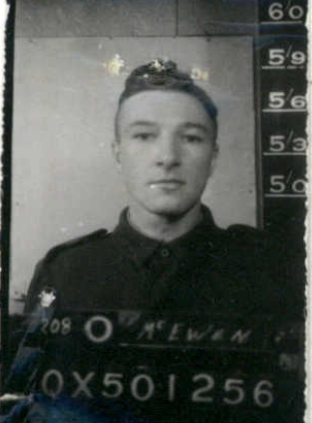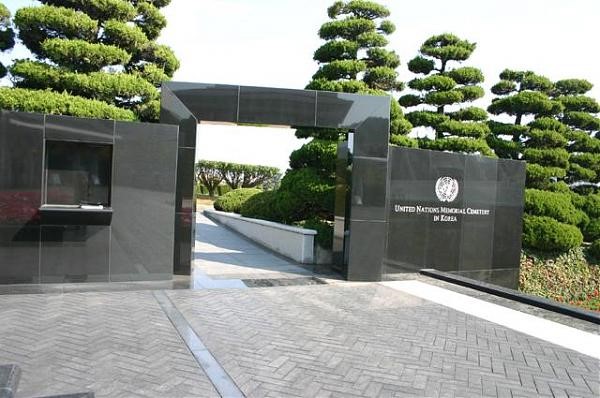Douglas McEwen was born on 12 December 1925 and enlisted for the first time in Toowoomba on 31 October 1946 for a period of two years. He was a Naturalized British Subject, Presbyterian and at the time was a chemist’s apprentice and was single. He was 5 feet 7 ½ inches, had a fair complexion and brown hair and a scar on his left wrist. He identified his father, Malcolm Wilkie McEwen of 59 Margaret Street, Toowoomba as his next of kin and the address as his permanent address.
His operations overseas with the 130 A.G.H. was under the service number QX501256 and held the rank of Corporal 1 star. He served in Japan from 16 October 1947 to 18 February 1949 and reengaged in the army for two years on 24 November 1948. He was discharged on the 2 March 1949.
He reenlisted on 14 August 1950 with the service number 1/400038 as a Private 1 star. He gave his address as 29 Philip Street, Toowoomba and was a Bank Officer at the time. He was initially posted to Japan on 6 September 1950 and joined the 3rd Battalion, Royal Australian Regiment on 9 September 1950. On the 27 September 1950 he embarked from Japan to Pusan in Korea and was sadly killed in action on 7 March 1951 in Korea. Below is a description from 3RAR’s official website on the history of the 3rd Battalion’s involvement in the Korean War. Douglas McEwen was entitled to the Korea Medal and the United Nation Service Medal.
History of 3RAR
In 1945 Australia sent three units to Japan as part of the British Commonwealth Occupation Force (BCOF). Originally known as the 65th, 66th and 67th Infantry Battalions, they were raised from Australian divisions stationed in New Guinea at the end of the Second World War. On 23 November 1948, the battalions were renamed the First, Second and Third Battalion, The Australian Regiment, respectively. The prefix “Royal” was granted by King George VI on 31 March 1949.
3RAR was in Japan when it was committed to the US-led United Nations Command forces on 26 July. Volunteers brought the battalion up to its full strength of 960 troops on 11 September, and training was carried out in Japan.
On 28 September 1950, 3RAR landed at Pusan, South Korea. The battalion was part of the 27th British Commonwealth Infantry Brigade. Troops from 3RAR were rotated and replaced on an individual basis, and 3RAR remained in Korea for the duration of the conflict.
3RAR was first deployed on 5 October in a counter-attack and advance by the UN Command. 3RAR fought numerous small engagements throughout October, almost on a daily basis. Its first major action was at Yongju (21-22 October) and it advanced through Pakchon (23-26 October) before meeting with heavy opposition at Chongju (29 October). 3RAR’s northern advance ended here.
The Chinese launched their First Phase Offensive on 1 November, causing a withdrawal of all UN forces. 3RAR withdrew through the Pakchon area. It blocked an enemy attack on 4-5 November at the Chongchon River. From November to January 1951, 3RAR retreated south. For a brief period it was established north of Uijongbu (12-31 December), before withdrawing through Seoul and regrouping at Chipyong-ni (2-4 January 1951). As part of the withdrawal, 3RAR conducted patrols and destroyed bridges, slowing the Chinese advance.
In January 1951 3RAR moved north with the 27th Brigade in a counter-offensive. It engaged the enemy at Chuam-ni (14-17 February), and also secured Hills 614 (24-27 February); 410 (7 March); 703 (12 March); “Sardine” (14 April); and “Salmon” (15 April). This brought 3RAR to the Kapyong Valley, north east of Seoul.
On 22 April 3RAR was stationed north of the village of Kapyong on Hill 504. The Australian position was attacked on the morning of 24 April, and the Chinese continued to attack in waves. 3RAR held firm, and on the afternoon of 25 April the exhausted Chinese abandoned their attack. The unit was awarded a Presidential Citation for its role in the battle.
On 26 April 3RAR was transferred to the 28th British Commonwealth Brigade. Throughout June and July, the Brigade joined with the 25th Canadian and the 29th British Brigades to form the 1st Commonwealth Division.
From April to early August 3RAR conducted patrols that pushed the Chinese northwards. Throughout June it was working to take control of the north bank of the Imjin River. The work was slow and dangerous, with most casualties resulting from mines.
3RAR patrolled the Imjin salient in August and September in preparation for Operation Commando, which began on 3 October. 3RAR’s primary task during this operation was to occupy Hill 317, which it did on 7 October. This action was later known as the Battle of Maryang-San. 3RAR also supported the Fusiliers in the taking of Hill 217, also known as the “Hinge”.
From October 1951 until the ceasefire at 11 pm on 27 July 1953, 3RAR’s main activity was patrolling the no man’s land between the two opposing trench lines that ran along the 38th Parallel. 3RAR conducted trench raids, patrols and reconnaissance. Some minor skirmishes resulted in small gains or losses of territory, but overall the front line altered very little in this time.
Living conditions were difficult. In winter it was not uncommon for top temperatures to be below zero, and troops had to take precautions against frost-bite and trench foot. At the other extreme, summer was humid, with heavy rain that often flooded the trenches. Added to this were possible attacks from the enemy coupled with shell and mortar fire.
Following the armistice, 3RAR was involved in training and border patrols. The battalion returned to Australia in November 1954.
Battle of Hill 410
The offensive began on 7 March, with the 3rd RAR being ordered to secure Hill 410 (923557). . “A” Company and “D” Company descended into the valley at 10:00 and advanced through open paddy fields under fire, then across the Asi-Ri–Punsuwon Road, to climb Hill 410. “A” Company ascended a third of the way up a spur before being pinned down by massed machine gun and light mortar fire. Calling for artillery and mortar support from 16th Field Regiment, Royal New Zealand Artillery and the United States Army (US), “B” Company 2nd Chemical Mortar Battalion, the fire support could not dislodge the Chinese and North Koreans, who were dug in, in machine gun and rifle pits.
“D” Company climbed a parallel spur to the right of “A” Company and also found the going difficult. At 15:00, D Company finally crossed the ridge line. Snowstorms began in the afternoon and hampered the evacuation of the wounded but “A” Company was able to advance. “B” Company then joined the two forward companies to consolidate the position. 3 RAR lost 12 killed and 24 wounded, while the 2nd Chemical Mortar Battalion suffered two wounded. At 06:30 on 8 March, “B” Company secured the rest of Hill 410 without opposition after the Chinese and North Koreans withdrew during the night.
Toowoomba Grammar School Archive Records show he joined the school on 31st January 1940 and left on 1st March 1942.
External Links
3rd Battalion Royal Australian Regiment History Site
Australian War Memorial Korean War Diaries
Australian Army Unit War Diary, Korea March 1951
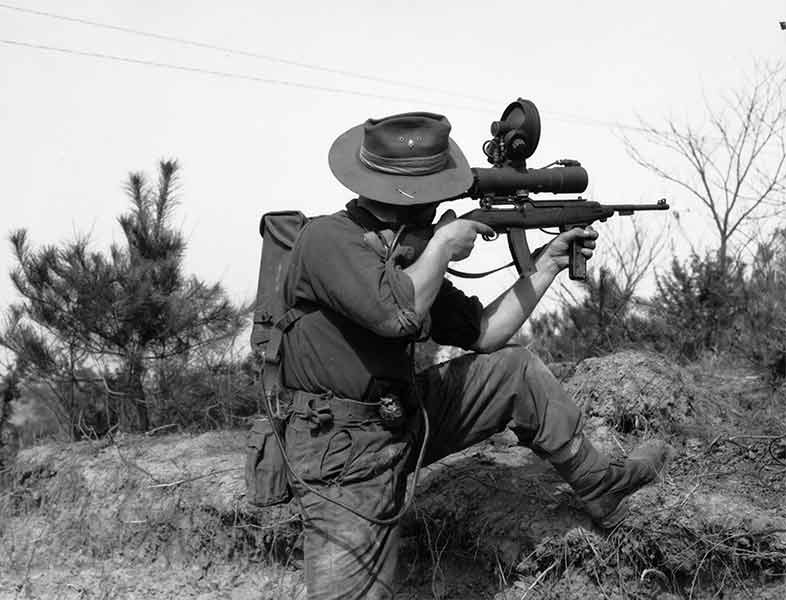
Private L. J. Best of Sniper Section, 3rd Battalion, the Royal Australian Regiment (3RAR), displaying the Sniperscope which is attached to a .30 calibre United States Carbine. The scope is battery operated and the battery is carried in the pack on his back. [AWM 147849
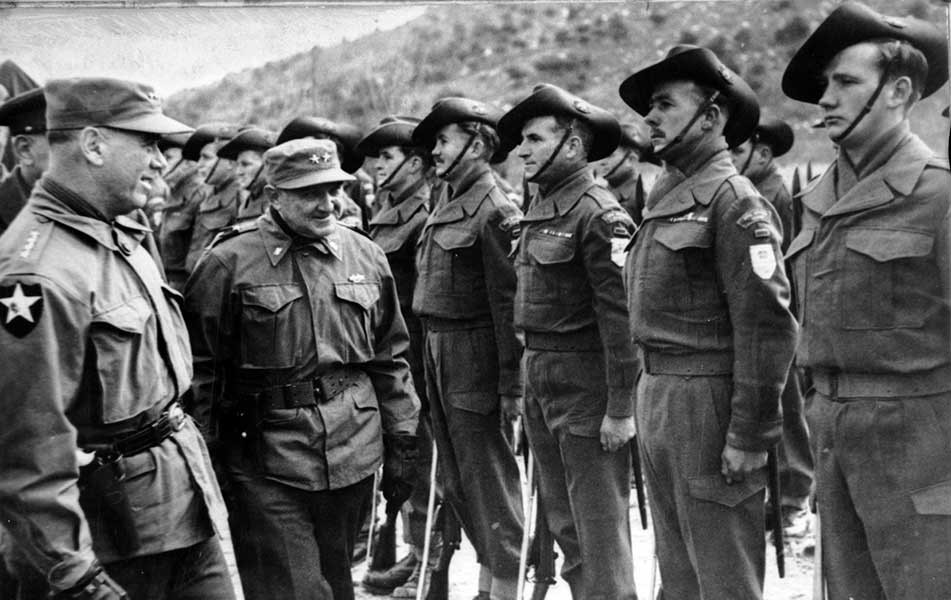
General Van Fleet, General Officer Commanding, 8th US Army (far left) inspects members of the 3rd Battalion (3RAR), when bestowing the Presidential citation in recognition of the Unit’s action at Kapyong, Korea. US Major General John W O’Daniel is to Van Fleet’s left. [AWM 083857]
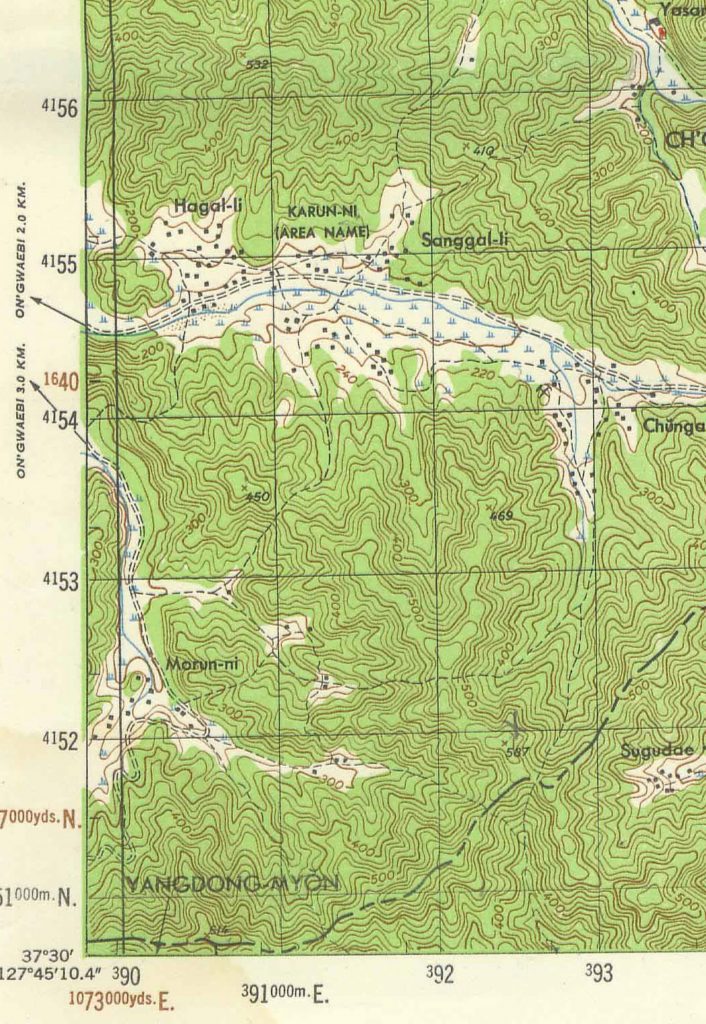
Area Map for Hill 410


